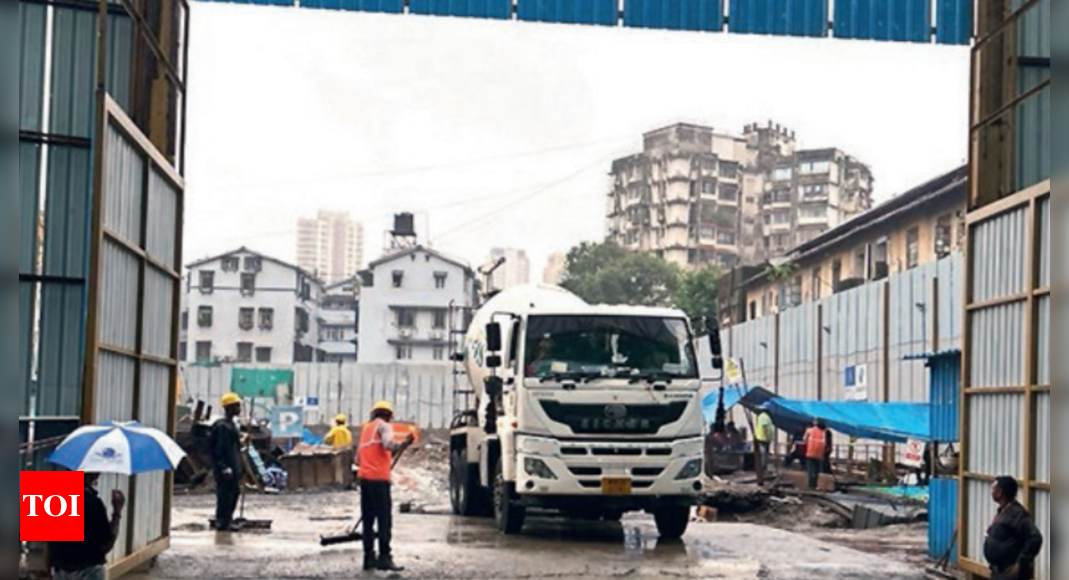In a space-starved city like Mumbai, the vertical growth is reaching stratospheric levels. The virtually unlimited Floor Space Index (FSI) in certain rehabilitation housing schemes has allowed developers to build higher and higher, even in congested areas. One such project that stands as an example of Mumbai’s vertical growth is the construction of India’s tallest residential twin towers behind Bhatia Hospital in South Mumbai. The twin towers, named Aaradhya Avaan, will be a staggering 312 metres tall and will comprise 18 podiums and 61 habitable floors.
The FSI, which defines how much can be built on a plot, is 10 under the Development Control Regulation 33 (9) meant for cluster redevelopment. In the island city, the average FSI is about 3. An FSI of 10 means that on a 1,000 square metre plot, a builder can construct 10,000 square metres. This high FSI has made projects like Aaradhya Avaan feasible and has paved the way for tall buildings to dominate Mumbai’s skyline.
However, the question arises: Can Mumbai handle the load of such massive constructions due to the high available FSI? According to Kedarnath Rao Ghorpade, an environmental sustainability planner and former chief planner of the Mumbai Metropolitan Region Development Authority, Mumbai has become an ‘urban planning experiment laboratory’ in terms of increasing land potential. The city has used development control and promotion regulations, along with the shift in land use demand and placement of different activities, to absorb the demand for additional floor space. But the constant increase in FSI without the supporting infrastructure raises concerns about sustainability.
Some leading Mumbai developers believe that there is too much tinkering in building regulations on a regular basis and that the process needs to be reviewed every 3-5 years. They suggest linking FSI in rehabilitation projects to road width and not increasing FSI to such an extent. They also emphasize the need for strict enforcement of parking and encroachment removal actions on all roads to improve Mumbai’s liveability.
Housing expert Chandrashekhar Prabhu highlights the negative consequences of high FSI, including abuse of building material, increased construction and maintenance costs, concretisation of open spaces, and bad planning. He warns about the disastrous consequences of high density, resulting in claustrophobic conditions and harm to citizens’ well-being.
Architect Manoj Daisaria, on the other hand, claims that the BMC (Brihanmumbai Municipal Corporation) has conducted a detailed study of the civic infrastructure related to water, sewerage, and stormwater drains before finalizing the new Development Control and Promotion Regulation (DCPR-2034). The results indicate that Mumbai can handle the infrastructure load, especially with the implementation of mass transport systems like metros, monorails, and coastal roads.
Comparisons are made to cities like Manhattan and Hong Kong, where high FSI allows for tall towers. However, it is noted that building rules in these cities are stringent, with a significant percentage of open spaces dedicated to public amenities. Critical impact assessments are also carried out before approving plans. In cities like New York, the public has a strong voice and can influence decisions through community board meetings.
The lack of proper zoning laws and frequent amendments to Mumbai’s development plan have led to rampant and haphazard development, particularly in congested areas. There is a need for regulated development plans that consider building size, population density, and land use to shape the city effectively. Without such measures, the vertical growth of Mumbai’s skyline may come at the cost of strained infrastructure and compromised citizen well-being.
For more information, read the full article here.











